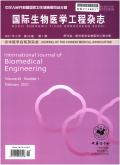Effects of EZH2 inhibitor DZNeP on osteogenic differentiation of periodontal ligament stem cells
引用次数: 0
Abstract
Objective To observe the osteogenic differentiation of human periodontal ligament stem cells (hPDLSCs) and to investigate the epigenetic regulation of EZH2 inhibitor DZNeP on osteogenic differentiation of hPDLSCs. Methods The hPDLSCs were isolated and cultured, and their proliferation under different concentrations of DZNeP (0, 1, 2, 5 and 10 μmol/L) was detected by MTT. The effects of DZNeP on osteogenic differentiation of hPDLSCs were observed by alkaline phosphatase (ALP) staining and alizarin red staining. The effect of DZNeP on the trimethylation of histone H3K27 in hPDLSCs was detected by immunofluorescence staining. Results Compared with the control group, the proliferation of hPDLSCs after 1, 2, 5 and 10 μmol/L DZNeP treatment for 48 h was significantly decreased, respectively (all P<0.05), and it was concentration-dependent. The result of ALP staining and alizarin red staining showed that DZNeP could promote the expression of early osteogenic markers ALP and the formation of advanced calcified nodules of hPDLSCs. The immunofluorescence staining result showed that the trimethylation fluorescence intensity of histone H3K27 was significantly decreased in the DZNeP group compared with the control group. Conclusions As an EZH2 inhibitor, DZNeP can inhibit the proliferation of hPDLSCs and promote the differentiation of hPDLSCs into osteoblasts in vitro, suggesting that DZNeP can be used as a potential small molecule drug for the treatment of periodontitis. Key words: Epigenetic regulation; EZH2; DZNeP; Human periodontal ligament stem cells; Osteogenic differentiationEZH2抑制剂DZNeP对牙周韧带干细胞成骨分化的影响
目的观察人牙周韧带干细胞(hPDLSCs)的成骨分化,探讨EZH2抑制剂DZNeP对hPDLSCs成骨分化的表观遗传调控作用。方法分离培养hPDLSCs,用MTT法检测不同浓度DZNeP(0、1、2、5、10 μmol/L)对hPDLSCs的增殖作用。通过碱性磷酸酶(ALP)染色和茜素红染色观察DZNeP对hPDLSCs成骨分化的影响。免疫荧光染色检测DZNeP对hPDLSCs组蛋白H3K27三甲基化的影响。结果与对照组相比,1、2、5、10 μmol/L DZNeP作用48 h后,hPDLSCs的增殖能力均显著降低(P<0.05),且呈浓度依赖性;ALP染色和茜素红染色结果显示,DZNeP可促进hPDLSCs早期成骨标志物ALP的表达和晚期钙化结节的形成。免疫荧光染色结果显示,DZNeP组蛋白H3K27的三甲基化荧光强度较对照组明显降低。结论DZNeP作为EZH2抑制剂,在体外可抑制hPDLSCs的增殖,促进hPDLSCs向成骨细胞的分化,提示DZNeP可作为治疗牙周炎的潜在小分子药物。关键词:表观遗传调控;EZH2;DZNeP;人牙周韧带干细胞;成骨分化
本文章由计算机程序翻译,如有差异,请以英文原文为准。
求助全文
约1分钟内获得全文
求助全文

 求助内容:
求助内容: 应助结果提醒方式:
应助结果提醒方式:


